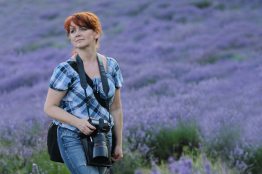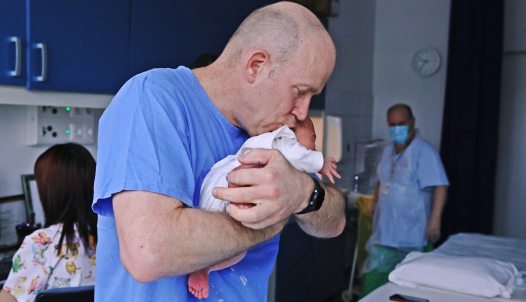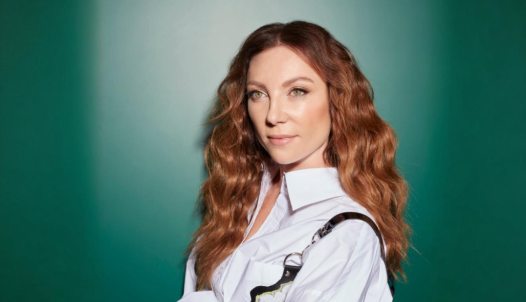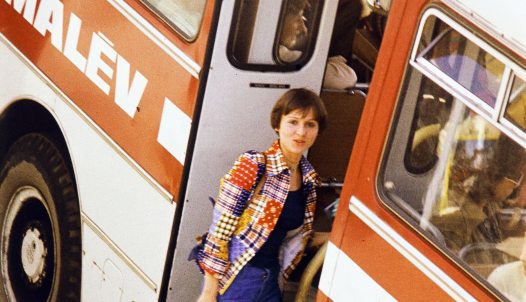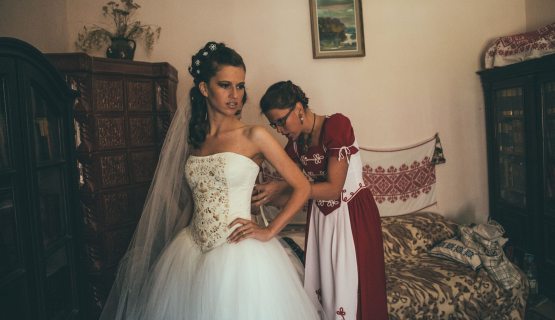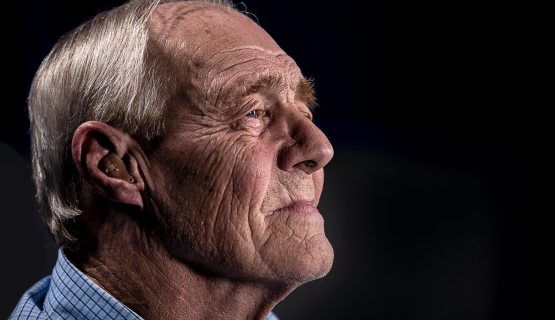Eszter Horváth, first prize winner at World Press Photo - “An expedition to the North Pole is also a quarantine situation”
Never before has a Hungarian woman won at a World Press Photo competition. Eszter Horváth took the photo immortalizing a curious polar bear in temperatures of -40 °C at the North Pole. The picture has a far from everyday story attached to it, similarly to how a Hungarian photographer found herself on expeditions to some of the most exotic destinations in the world.
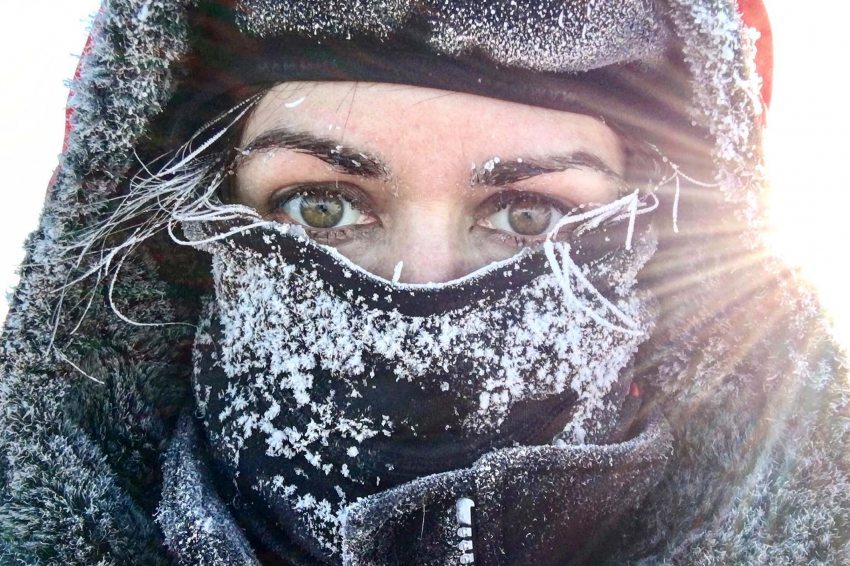
In the space of just a few days, two Hungarian women found themselves sharing in major photography prizes. Bea Kovács won one of the top prizes at the Press Photo Competition, while Eszter Horváth came out top in this year’s Environment (individual) category at World Press Photo. In fact, she has already had photos published (under the name Esther Horvath) in the pages of National Geographic, New York Times, Wall Street Journal and Time magazine.
What was it like to receive this news?
“Like an explosion. This prize was always my greatest dream. It was already a fantastic experience to receive the e-mail telling me that I had been nominated, that is, that I would be winner of a prize and I wasn’t at all bothered in which position my photo would end up. When during the virtual awards ceremony they named and presented the third-, then second-placed photos, and neither of them were mine, tears of joy immediately started to flow because it was such an incredible feeling.”
I presume that when there is no epidemic, the results are not announced in the framework of an online private group chat.
“Each year, this is a beautiful event that is usually attended by the king of the Netherlands, and it also marks the formal opening of the World Press Photo exhibition. I recently realized that although it would have been great to experience all this live, still thanks to the online awards ceremony at least sixty people didn’t fly to Amsterdam, in the process expanding the carbon footprint.”
Over the past few years, Hungarian photographers have started picking up prizes at World Press. Is it possible that after the successes of Bence Máté we have finally made it onto the ‘photographer’s map’ and thus things were slightly easier to you?
“Right up until the end of the competition, the jury have no idea about the photographers, they do not know who took which picture. This time, for instance, the same photographer won first prize in two sub-categories but this only became apparent afterwards.
“So far, Hungarians have won seven times, but I am the first Hungarian woman to be awarded first prize.”
I suppose you remember the exact moment when you snapped the polar bears.
“The photograph was taken on the North Pole MOSAIC expedition where for the first three and a half months, from September last year to January of this, I looked after photo-documenting of the research. This picture was taken right at the beginning of the expedition but we had just entered the winter night, which means that from then on, for several months, it is dark 24 hours a day. I remember that we had just finished dinner and I went out onto the deck when we noticed that a female polar bear and her cub were approaching the boat. They were curious and started sniffing the electrical cable. I raced as fast as I could up to the prow of the boat in case things worked out as I suspected, and the bears followed the cable; that is when I snapped them. When I had taken the photos, especially when the small polar bear cub stood on its back legs, I felt that this would be a significant picture.
“I was really looking forward to a moment like this, where I could show that we researchers are just guests in polar bear country.
“The picture really reflects the polar darkness as well since it is possible to see only what appears in the ship’s spotlight. Perhaps it is precisely because of the barren landscape and flags that many people are reminded of the Moon landings in this photo.”
This all sounds fantastic when you tell the story. However, how can a person take photographs when it is minus forty degrees outside?
“I gradually found out how this would all work. When we were working on the ice, first I would put on a pair of thin gloves, in these would go hand warmers, then I would pull thick ski gloves over the top, but even so my hands would get so frozen in the -40–45 °C that I cried every day. Finally we acquired a pair of huge gloves, known amongst our group as ‘hand saunas’, but they were so unwieldy that when wearing them I couldn’t even press the shoot button on the camera. Finally, I stuck a series of small circles cut from thick duct tape together – like a layered cake – and used this to raise the height of the button, which allowed me take photographs and not lose my hands to frostbite.”
Are the members of the expedition still there at the North Pole, even during the pandemic?
“Yes, they are in the safest place in the world. It is so interesting that at the beginning of the expedition we also spoke theoretically about the fact that if anything should happen in the world, we would be in the best place of all.”
How could you manage being in a place where you see only the moon 24 hours a day and one day is exactly like the next?
“When we were outside, we always wore a face protector, a hat, a scarf and then a hood over all this. The wind blows constantly, one cannot hear a thing and due to the darkness one can only see what happens to be in the beam of the spotlight at that moment.
“After a time I noticed that a person begins to pay attention to his/her inner self because lacking the usual hearing and vision, the senses work differently.”
In fact, your large ship can be considered a quarantine zone because you were only in touch with each other for months at a time. Do you have any experience from the routine you developed there that you are able to utilize in the current situation?
“The parallel frequently comes to mind. Just like now, we find it slightly difficult to know what day of the week it is, so in the North Pole, in non-stop night, it was difficult to keep track of whether it was Wednesday or Thursday, principally because there were never any days off and every single day looked the same. Most often we worked out the date by the type of food served: stewed vegetables were always served on Saturdays. In this situation created by coronavirus, I have asked myself what I can utilize in my current life of those things I learnt there. If I think back to MOSAIC, the truth is that everything depended on nature and the weather, and we were so at the mercy of this higher being that we only ever planned one day ahead. Each evening we had a talk where the next day’s schedule was laid out, but whether what we had planned would actually happen or not nobody could say with certainty.
“It didn’t matter that we had a plan, if the ice started cracking and we had to struggle to save the research equipment, or polar bears turned up, then everything would be upset.
“It is very interesting that my brain became totally accustomed to this and it was inconceivable that I would even consider or begin to think about what would happen in a couple of days’ time. Now the entire planet is in the same situation, virtually everyone is living day to day. I am looking closely at myself to see whether what I could easily handle on the expedition works here as well.”
And do you feel you are managing to make yourself useful here, too?
“I have not failed yet, but I, too, find it is increasingly difficult because everything is ready for my next expedition and all we are waiting for is the green light signaling the end of the pandemic. I am also really excited that finally, I will be able to publish the greatest discovery of the MOSAIC expedition, which I was lucky enough to capture with my camera. All I can reveal in advance about it is that something happened that not even we had expected.”
I suppose that it tends to be men who prefer to work in such inhospitable circumstances. Would you ever have thought as a child that one day you would be trained to defend yourself against polar bears?
“From childhood, I always saw myself first and foremost as a human being, not as a woman or a man, so I never felt that I couldn't achieve this or that as a woman.
“In my work, too, I always pay great attention to treating everyone as a person and not as a woman or a man. It is absolutely characteristic on expeditions as well that anybody who has made it that far and is ready to work 8-10 hours a day in minus 45-degree temperatures without any rest day, for three and a half months, then it is completely irrelevant what gender they are. The point is for them to feel love for the given environment.”
